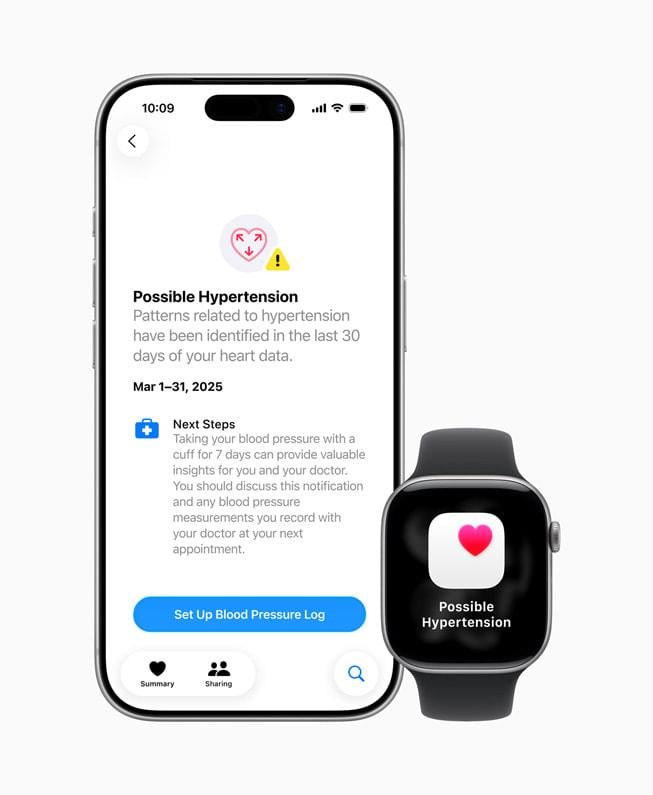Apple’s latest smartwatch—as well as some previous models—will soon carry the ability to detect potentially high blood pressure, the top risk factor for cardiovascular disease.
Making its debut alongside the Apple Watch Series 11, hypertension notifications will also be available on models as far back as the Series 9 and Ultra 2. Apple said it expects to roll out the feature globally this month, following clearances from the FDA and European authorities.
The tech giant said its approach was developed from biosensor data gathered from more than 100,000 people across multiple studies, before being successfully tested in a clinical trial of more than 2,000 participants.

Once available, Apple expects it will notify at least 1 million users of previously undiagnosed chronic high blood pressure within its first year on the wrist—a condition it estimates affects as many as 1.3 billion adults around the planet.
The system employs the same light-based sensor hardware the Apple Watch uses to measure pulse rates. By recording how blood vessels react to the force of each beat, averaged over a 30-day period, it will alert the wearer to consistent signs of hypertension. Apple recommends that anyone who receives a notification should check their blood pressure regularly for at least a week by using a traditional inflatable cuff, and then contact their healthcare provider.
Hypertension tracking will join the Apple Watch’s suite of cardiovascular-focused sensor applications, which include a single-lead electrocardiogram, arrhythmia detection and high and low heart rate alerts, as well as blood oxygen recording—the last of which recently returned to the device after an 18-month hiatus.
In August, Apple announced that its redesigned pulse oximetry had received a green light to head to market from U.S. Customs and Border Protection, after it was previously forced to disable the function following an import ban and patent challenges from Masimo.
Within a week, Masimo filed a lawsuit against the customs department, saying it acted beyond its authority to reverse the findings of the U.S. International Trade Commission and that Apple’s technical method of getting around the import ban should not be allowed.